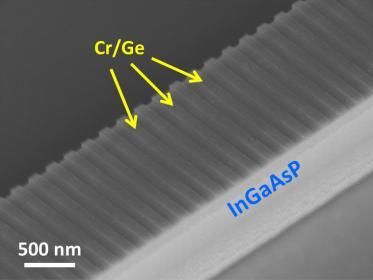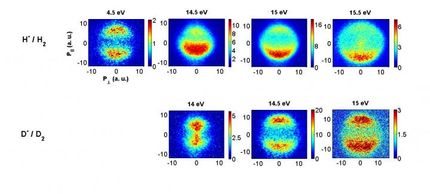Stable molecular state of photons and artificial atom discovered
A new state of a superconducting artificial atom dressed with virtual photons is discovered It provides a clear example for a forty-year-old problem in atomic physics It may contribute to the development of quantum technologies such as quantum communication or quantum metrology
Researchers at the National Institute of Information and Communications Technology (NICT), in collaboration with researchers at the Nippon Telegraph and Telephone Corporation (NTT) and the Qatar Environment and Energy Research Institute (QEERI) have discovered qualitatively new states of a superconducting artificial atom dressed with virtual photons. The discovery was made using spectroscopic measurements on an artificial atom that is very strongly coupled to the light field inside a superconducting cavity. This result provides a new platform to investigate the interaction between light and matter at a fundamental level, helps understand quantum phase transitions and provides a route to applications of non-classical light such as Schrödinger cat states. It may contribute to the development of quantum technologies in areas such as quantum communication, quantum simulation and computation, or quantum metrology.
Background and Challenges
The indispensable technologies in modern life such as a time system measured by an atomic clock and a secure and energy-efficient communications system are based on the fundamental science of the interaction between light and matter at the single-photon level. The absorption and emission of light from any device is explained based on the interaction of light and atoms. A fundamental question in atomic physics, "How strong can the coupling of light and an atom be?" has not been answered in spite of years of research, because it is not easy to find appropriate methods to realize very strong coupling.
It was predicted over forty years ago that if the coupling is extremely strong a qualitatively new lowest energy state (the ground state) of light and an atom should be realized. A debate soon started as to whether this prediction would still apply when realistic conditions are considered. A few years ago, our collaborator at QEERI, Dr. Sahel Ashhab, performed theoretical investigations and identified desirable conditions for achieving this new state using superconducting circuits.
Achievements
In the experiment, we used a microfabricated superconducting harmonic oscillator and a superconducting artificial atom (quantum bit or qubit) whose electronic states behave quantum mechanically, just like a natural atom. By carefully designing a superconducting persistent-current qubit interacting with an LC harmonic oscillator that has a large zero-point fluctuation current via a large shared Josephson inductance, we found the new ground state as predicted theoretically.
The total energy of the qubit and the oscillator is the sum of the photon energy in the oscillator, the qubit energy, and the coupling energy binding the photons to the qubit. Taking advantage of the macroscopic quantum system, we could realize circuits with coupling energy larger than both the photon energy and the qubit energy. This situation is sometimes called 'deep strong coupling'.
In addition, we have observed that the transitions between energy levels are governed by selection rules stemming from the symmetry of the entangled energy eigenstates, including the ground state.
Prospect
We plan to test whether deep strong coupling is possible or not using more than one superconducting artificial atom (qubit), which remains a question of debate. We will also try to actively manipulate this new molecular state of photons and artificial atoms, for example, to observe and control the dynamics of photon absorption and emission, and to demonstrate new methods of entanglement generation.
Original publication
Original publication
Fumiki Yoshihara, Tomoko Fuse, Sahel Ashhab, Kosuke Kakuyanagi, Shiro Saito & Kouichi Semba; "Superconducting qubit–oscillator circuit beyond the ultrastrong-coupling regime"; Nature Physics; 2016
Topics
Organizations
Other news from the department science

Get the chemical industry in your inbox
By submitting this form you agree that LUMITOS AG will send you the newsletter(s) selected above by email. Your data will not be passed on to third parties. Your data will be stored and processed in accordance with our data protection regulations. LUMITOS may contact you by email for the purpose of advertising or market and opinion surveys. You can revoke your consent at any time without giving reasons to LUMITOS AG, Ernst-Augustin-Str. 2, 12489 Berlin, Germany or by e-mail at revoke@lumitos.com with effect for the future. In addition, each email contains a link to unsubscribe from the corresponding newsletter.


























































